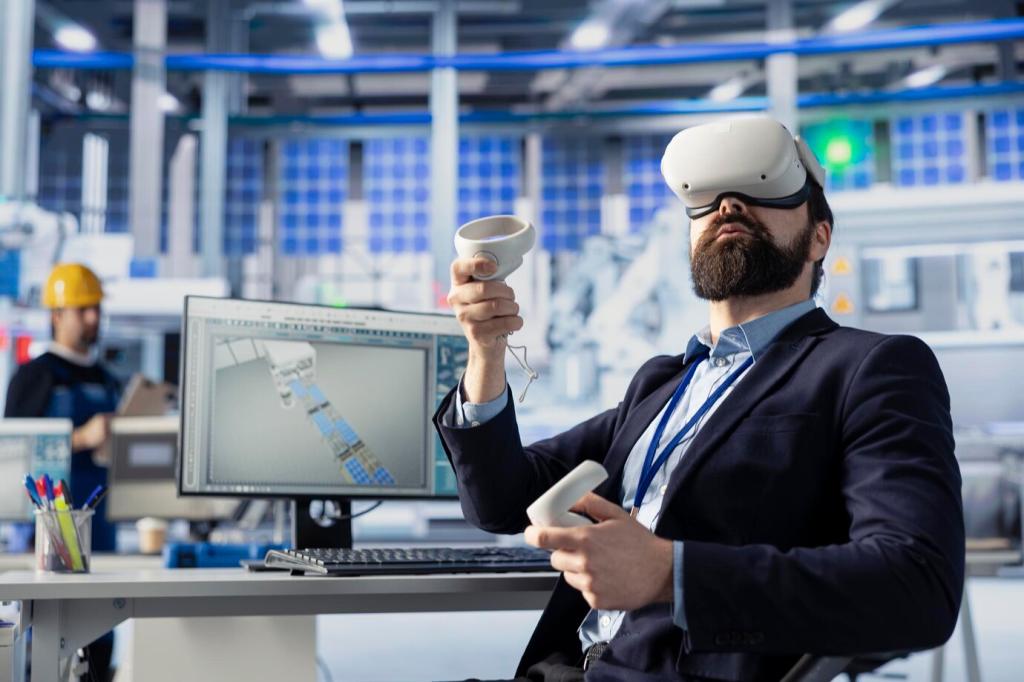Energy Efficiency Solutions in Sustainable Architectural Design
Energy efficiency stands at the forefront of sustainable architectural design, where ingenuity meets responsibility for a more resilient future. By focusing on minimizing energy consumption while maximizing performance and comfort, architects and designers are reshaping how buildings impact the environment. This approach not only lowers operational costs but also contributes significantly to climate change mitigation by reducing reliance on nonrenewable energy sources. Through innovative materials, passive strategies, and smart systems, energy efficiency becomes an integral aspect of every phase in architectural projects, offering lasting benefits for occupants and the surrounding ecosystem alike.


Orientation and Daylighting
The way a building is positioned on its site significantly influences its energy consumption. By thoughtfully orienting structures to capitalize on available daylight, architects can reduce the need for artificial lighting, enhance occupant well-being, and decrease energy costs. Strategies such as incorporating larger windows on south-facing façades (in the Northern Hemisphere), employing overhangs to prevent overheating during summer, and using reflective interior surfaces help maximize daylight distribution. These nuanced decisions harness the sun’s natural trajectory to achieve optimal light penetration and thermal comfort, seamlessly integrating aesthetics with energy-saving objectives.

Natural Ventilation
Natural ventilation leverages ambient winds and internal temperature differences to circulate fresh air and regulate indoor climates without mechanical intervention. By designing for effective cross-ventilation, stack ventilation, and the use of operable windows or vents, architects can significantly reduce the dependency on energy-intensive HVAC systems. Implementing courtyards, atriums, and thoughtfully placed openings not only ensures adequate airflow but also improves indoor air quality and occupant comfort. This sustainable approach transforms environmental conditions into assets, promoting health and reducing the building’s carbon footprint.
High-Performance Building Envelope Systems
Achieving high energy efficiency begins with robust thermal insulation throughout floors, walls, and roofs. Employing insulating materials with superior thermal resistance prevents unwanted heat transfer, keeping interiors warmer in winter and cooler in summer. Cutting-edge solutions like spray foam, vacuum-insulated panels, and phase change materials can offer enhanced performance over traditional options. Well-installed insulation eliminates thermal bridges and reduces drafts, ensuring minimal energy loss and lowering utility costs, all while contributing to occupant comfort and reducing environmental impact.

Solar Power Solutions
Harnessing solar energy with photovoltaic (PV) panels or solar thermal collectors empowers buildings to generate clean electricity or hot water on site. Strategic placement of PV arrays on roofs, façades, or even as part of shading devices ensures maximum sun exposure and efficiency. Coupled with battery storage systems, solar technology not only reduces reliance on grid electricity but also provides resilience during outages. This integration supports both environmental goals and financial savings, with incentives and technological advances further driving adoption.

Wind and Geothermal Applications
In certain locations, small-scale wind turbines and geothermal heat pumps supplement energy needs by tapping into locally available resources. Geothermal systems make use of the earth’s stable subsurface temperatures to provide highly efficient heating and cooling, dramatically reducing conventional energy demands. Wind turbines can be applied on or near sites where wind conditions are favorable, contributing to the building’s total energy mix. When combined with other renewables, these systems form a robust and reliable energy infrastructure that enhances overall sustainability.

Smart Energy Management
Successfully integrating renewable systems requires intelligent energy management platforms. Advanced building management systems (BMS) monitor energy generation, usage patterns, and storage, ensuring resources are optimally allocated and peak demand is minimized. Smart meters, sensors, and automated controls support real-time adjustments for lighting, temperature, and equipment, streamlining building operations and maximizing renewable energy utilization. These digital tools translate environmental performance into actionable insights, bridging the gap between technical complexity and daily user needs.
